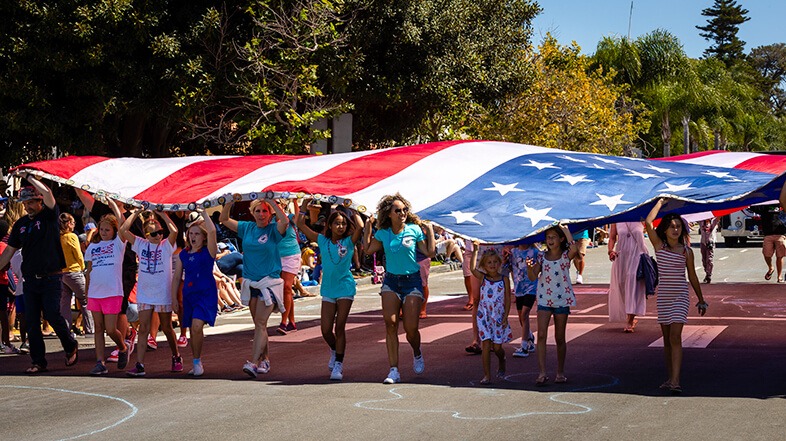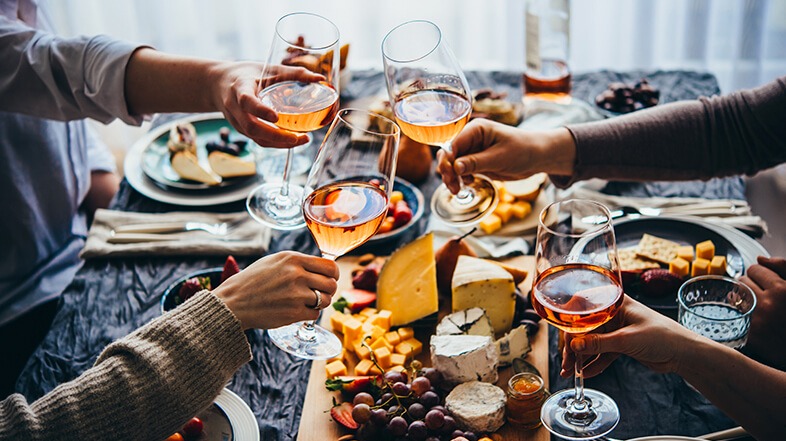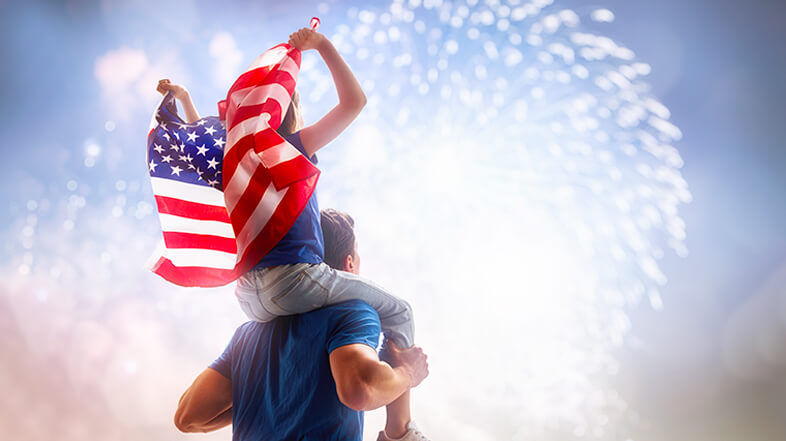
The 4th of July: Then and Now
Americans have celebrated the signing of the Declaration of Independence on the 4th of July since 1776, even though the Declaration of Independence wasn’t signed until August 2, 1776.
There is a lot of fun history to learn about the 4th beyond the confusing sequence of dates surrounding the holiday.
For example, even though the Declaration of Independence was signed in 1776, the 4th of July wasn’t recognized as a federal holiday until 1870.
However, many of the traditions we follow today are the same as those back in the very beginning.
John Adams believed the day would be celebrated throughout American history with “with Pomp and Parade, with Shews, Games, Sports, Guns, Bells, Bonfires and Illuminations from one End of this Continent to the other from this Time forward forever more.”¹
We still celebrate our country’s independence with plenty of pomp and circumstance. It just goes to show that the more things change, the more things stay the same.
Let’s take a minute to look at how the 4th of July has changed and remained the same throughout the years.
Fireworks

Following the signing of the Declaration of Independence, the first organized celebration was held on July 4,1777, in Philadelphia, Pennsylvania.
According to the Pennsylvania Evening Post on July 5, 1777, “The evening was closed with the ringing of bells and at night there was a grand exhibition of fireworks (which began and concluded with thirteen rockets) on the Commons, and the city was beautifully illuminated.”²
As fireworks became more widely available, more displays took place.
Specifically, it wasn’t until the 1830s that inventors discovered how to make colored fireworks, hence the red, white, and blue fireworks we see today.
History reports, “By the time Independence Day celebrations really took off after the War of 1812 (another conflict pitting the United States against Britain), fireworks were even more widely available. They would become an increasingly important part of the festivities in the years to come, as public safety concerns caused cannon and gunfire to be gradually phased out of celebrations.”³
Americans moved from celebratory cannons and gunfire to elaborate shows.
Americans spent an estimated $2.4 billion on fireworks in 2021, and 66% of fireworks injuries occur around the 4th of July.⁴
Parades and Celebrations

The oldest, continuous 4th of July parade began in Bristol, Rhode Island, in 1785, along with the town’s official celebration.
The Bristol 4th of July includes a parade, pageant, concerts, sports, carnival, car show, and fireworks (of course).
The Bristol 4th of July has happened every year since 1785 – including during the pandemic.
However, the White House didn’t have a 4th of July celebration until 1801.
During the 1800s, it was common for towns to celebrate the 4th of July.
KRCU Public Radio reports, “Fourth of July celebrations in the 1820s and 1830s were pretty typical for that time period. They started with an artillery reveille at dawn and were followed by shooting cannons or muskets into the air. A parade would begin at 8:00 a.m. or 9:00 a.m., and participants would then listen to a speaker at a courthouse or church.”⁵
It wasn’t until the 1850s that 4th of July celebrations became more private affairs, with families gathering with friends for meals instead of entire communities.⁶
Wars also influenced the 4th of July parades and celebrations.
For example, the celebrations during The Civil War were more militaristic than they would be in future years.⁷
Today, there are countless 4th of July celebrations, but they still often include parades, celebratory fireworks, and spending time with others.
The National Retail Federation predicts 84% of Americans plan to celebrate the holiday, with 59% of those hosting a cookout, barbecue, or picnic.⁸
In addition, almost 50 million people travel to celebrate the 4th of July holiday weekend.⁹
Food, Food, and More Food

If you are not from New England, you may not know that the traditional food to eat on the 4th of July was once salmon.
It’s reported, “From the earliest days, it has been a tradition all through New England to serve Poached Salmon with Egg Sauce, along with the first new potatoes and early peas, on the Fourth of July. The eastern salmon began to ‘run’ about this time, and the new vegetables were just coming in.”¹⁰
The food we eat on the 4th of July has changed significantly. Instead of poached salmon, hot dogs are the most popular 4th of July meal.
Reports suggest there are 150 million hot dogs eaten on the 4th of July.¹¹
This switch from salmon to hot dogs began around 1916 when Nathan’s annual July 4th hot dog eating contest began. The first official contest took place in 1972, and since then, hot dogs have been the food of choice for the holiday.¹²
Toasts and Drinks

Americans have always enjoyed celebrating the 4th of July by raising a toast.
George Washington ordered a double ration of rum for his soldiers to celebrate the 4th in 1778 during the Revolutionary War.
One of the early 4th of July traditions involved making 13 toasts.
Men would head to a local tavern and would do 13 toasts, the first to the United States, the second to George Washington, and then a toastmaster would lead toasts for different politicians or policies.
Today, Americans spend around $1.4 billion on 4th of July beer and wine.¹³
The 4th of July is also the “top holiday for at-home beer consumption.”¹⁴
Patriotism

Much like our Founding Fathers, Americans take great pride in celebrating their country’s independence.
There are many displays of patriotism, from people wearing the colors red, white, and blue to displaying the American flag.
We hope you find ways to celebrate the 4th of July with traditions old and new.
Better Prepare for a Life of Abundance in Retirement.
Check us out on YouTube.
Sources:
- http://www.masshist.org/digitaladams/archive/doc?id=L17760703jasecond
- https://www.history.com/news/july-4-fireworks-independence-day-john-adams
- https://www.history.com/news/july-4-fireworks-independence-day-john-adams
- https://wallethub.com/blog/4th-of-july-facts/22075
- https://www.krcu.org/arts-culture/2013-11-01/parading-patriotism-how-fourth-of-july-celebrations-changed-during-the-mid-1800s
- https://www.krcu.org/arts-culture/2013-11-01/parading-patriotism-how-fourth-of-july-celebrations-changed-during-the-mid-1800s
- https://www.krcu.org/arts-culture/2013-11-01/parading-patriotism-how-fourth-of-july-celebrations-changed-during-the-mid-1800s
- https://www.foxbusiness.com/lifestyle/4th-july-numbers-look-american-holiday
- https://www.foxbusiness.com/lifestyle/4th-july-numbers-look-american-holiday
- https://www.csmonitor.com/The-Culture/Food/Stir-It-Up/2013/0702/Fourth-of-July-supper-New-England-poached-salmon
- https://wallethub.com/blog/4th-of-july-facts/22075
- https://www.womansday.com/life/entertainment/g32869047/4th-of-july-facts/
- https://wallethub.com/blog/4th-of-july-facts/22075
- https://www.foxbusiness.com/lifestyle/4th-july-numbers-look-american-holiday








